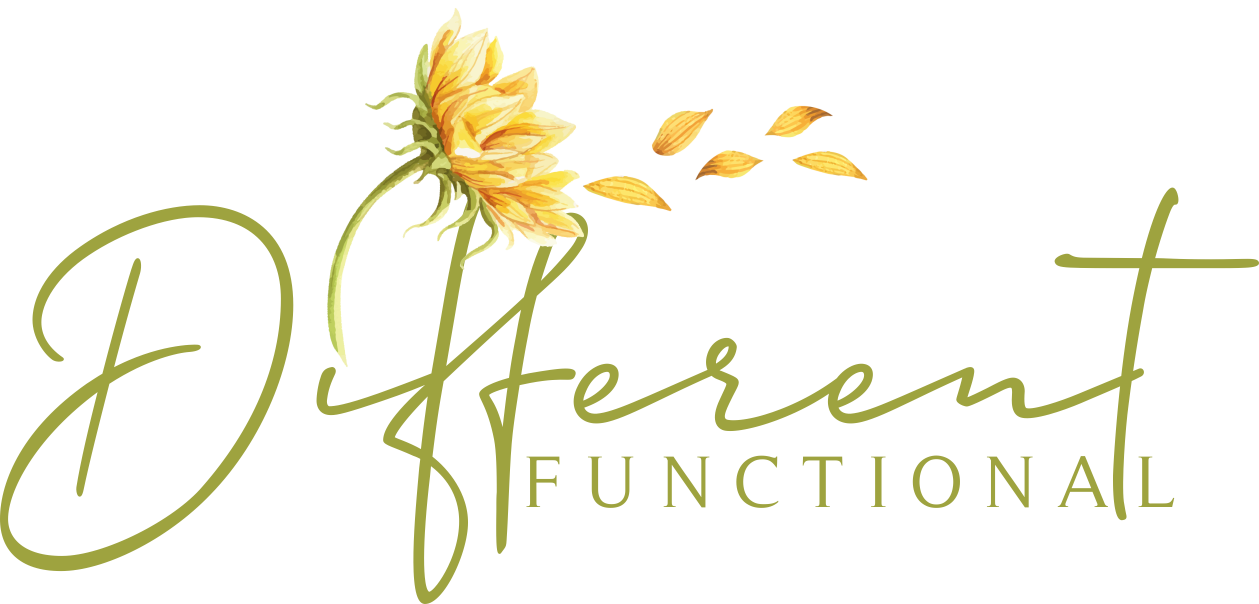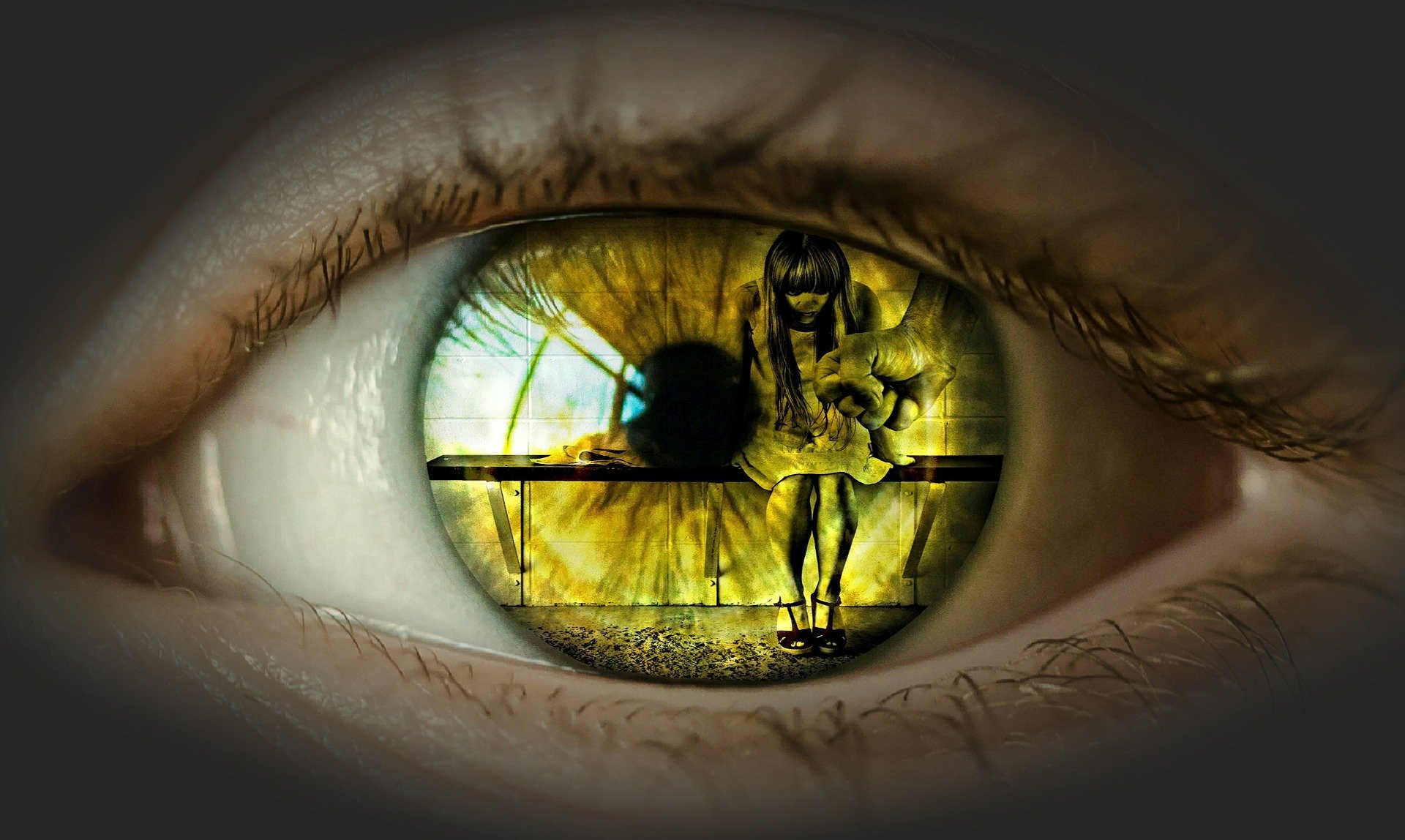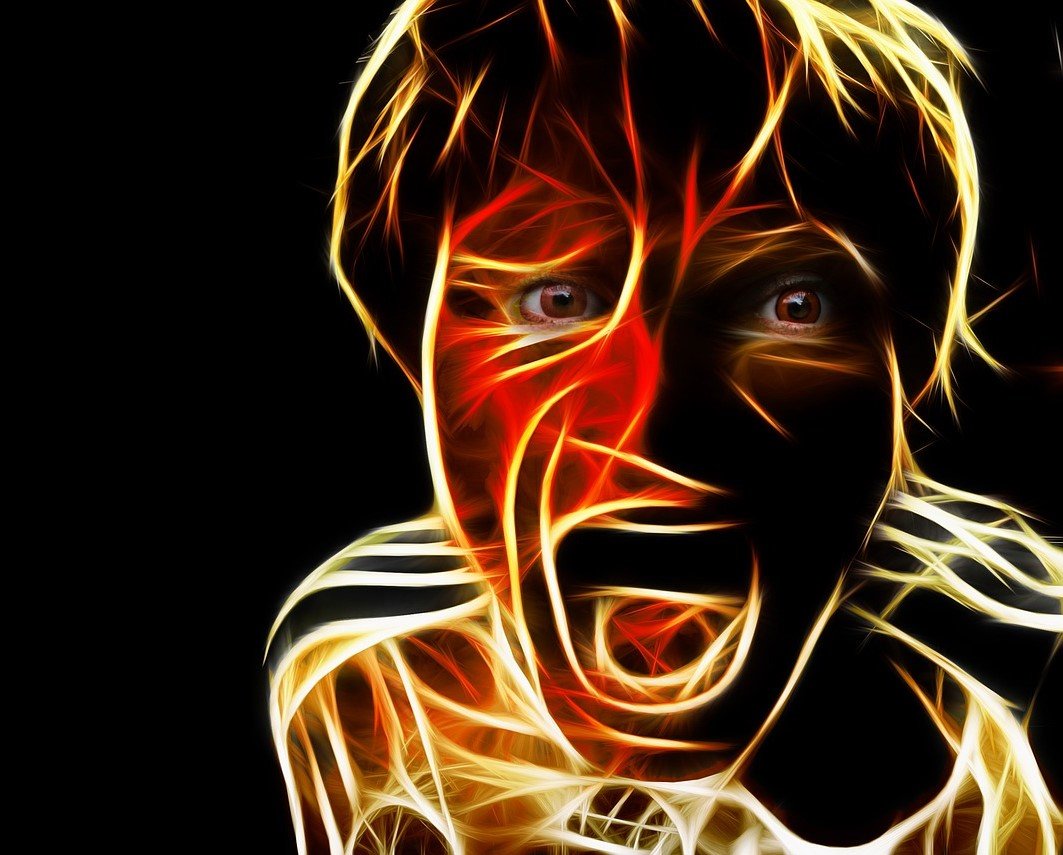Part 2: Why It Gets Worse Before It Gets Better: Relational Contexts of Initial Healing with Trauma
In the last installment of the Different Functional Blog, we examined some of the fundamental reasons why healing from trauma is such a difficult process. And why the individual often seems resistant to healing or change at all. In this installment, I want to focus in on the relational context of this journey.
Difficulty Trusting
As I stated in my Science of Love blog, humans are open systems. We use others to help regulate our processes. Everything from heart rate and breathing patters to neurochemical levels. This is why a safe relationship can be so vital to healing from trauma, it is a place where new patterns of regulation can occur.
Unfortunately, though, an individual who has experienced trauma is typically dysregulated. Their body is in panic mode. Before trust is built in a relationship, and sometimes even after, this can make connecting and the regulation that comes through it difficult. The person wants to feel calm. The logical portions of their mind may even understand that the hypervigilance of their systems is inappropriate to the current context. So, they reach out, attempting to connect with someone who can soothe their system. But, what they find in the other person, feels like a lie.
Imagine being in a life-threatening situation. Someone has just shot 3 of your friends in front of you and is now pointing the gun at you, finger on the trigger. And the one remaining friend you have left tells you that you are safe. To not worry, you will survive this situation, you just need to calm down. What you have just experienced indicates this is a lie. Someone has callously gunned three people you love and you are clearly next. Your friends words are not only hollow but highly suspicious. Are you going to stand there calmly believing him? Or are you going to attempt to run or fight for your life?
When in extreme dysregulation from trauma, this can be what our bodies are telling us. Death is imminent. Threat is real. And every nerve and fiber of our being is firing, firing, firing: trying to do whatever it can to survive the next few moments. Sometimes we can get so lost in this feeling we can forget that these feelings do not match reality. Other times, we may realize that what our body and brain is telling us is wrong and that we are actually safe. But this is logic, and logic holds little sway over the amygdala. This means that our body is pushing us to doubt. It’s pushing us to suspicion and mistrust, because everything is currently a threat. Especially someone who says with words or with their energy that we should lower our defenses in a time of crisis.
Additionally, even if we want to believe the other person, even if we want to be calm, even if logically we can understand that we are safe, we are now torn between two realities. They reality in our head and the reality in someone else’s. This, for me, is what “crazy” feels like. When you are sane enough to understand your reality is false, but powerless to change how real it feels. This discordance in and of itself is enough to drive a wedge in even a loving, trusting, established relationship. It can be so frightening to know our perceptions are wrong, our thoughts are wrong, our emotions are lying, our body is lying. If we can’t even trust ourselves, what we see with our eyes and experience with our heart, how are we supposed to trust someone else?
Inability to Attach
This issue of trust becomes even more true if your trauma occurred in the context of a relationship, especially one with a caregiver that helped to shape the very meaning of relationships for you. These early relationships define not only your understanding of what relationships are, but shape your very ability to connect with others.
On the very unlucky side of the scale, it’s possible the context of your trauma impaired the ability to connect at all. If an individual never learned how to connect, was never shown that others can be “looped with” in a manner that helps to regulate, the person may be unable to reach out at all. The very attempts at connection, even ones that are safe or loving, can feel foreign and violating. The natural and necessary attempts of their brain to connect with yours can feel like manipulation. Like an attempt to undermine your safety, to change you and shape you in ways that feel out of your control.
If a stranger moved into your home uninvited, attempted to go through your drawers, rearranged your furniture, all without your permission, wouldn’t you be upset? Wouldn’t you act out? How much more so when the drawers are your intimate secrets, the furniture the very behaviors you use to survive? Your greatest desire would likely be to force the other person out of your home, out of your mind. So that once again you could feel safe and you could feel balanced. For individuals that have not learned how to connect, this is what normal “looping” can feel like. A violation of your personal/private space.
Damaged Relational Homeostasis
Perhaps, though, the person did learn to attach. But the attachments they learned are damaging and skewed. Perhaps they learned that love is accompanied by pain, or that caring feels like suffocation. Maybe the only love language they learned was invalidation and manipulation. Whatever the pattern that was established, it is not easy to change.
That pattern has become a point of homeostasis. Only when they feel those things do they feel love, or attachment, or possibly even lust. That balance point is like your body temperature being set to 104. It makes you sick and nauseous. It exhausts you. It cooks you from the inside causing more and more damage. But everything in your system is fighting to keep that temperature at 104, because that is what your body believes is “normal” and “right”.
Sometimes, especially when we are at the beginning of the healing journey, we may not even realize that these patterns are wrong. This is just what love means. And so that is what we seek and that is how we act. Other times, we may realize the love story written in their neurons is damaging, but feel powerless to change it. We are already struggling with so much, trying our best to just stay afloat, there is not energy left to even attempt to edit it.
So, we keep repeating the same patterns again and again. We keep walking the same path knowing its going to lead to the same destination. But we feel powerless to stop ourselves We are human and the need to connect. We want to connect. We are dying to connect. But it never quite feels like love, unless it hurts. So sometimes we make it hurt. We do what we feel is necessary to help our body feel love and connection. We try to pull others into our patterns so we can feel “loved”. Unfortunately, these patterns can be chaotic and painful. Which means we may inadvertently create chaos and pain in our relationships.
Transference is Likely
When a person is able to find love and connect, possibly even in a healthy manner, they are still reeling from the past. As I said in the last installment, they are shifting out of survival mode allowing the past to flood in. And these feelings and memories must be dealt with. They leak into every part of our life, including our relationships.
If the trauma occurred in the context of a relationship, it is likely then that the person will feel driven to begin healing in the relationship. While initially, this doesn’t sound bad, you have to remember what they are healing from and that all too often attempting to heal trauma, when unguided, can simply end up being reliving the trauma again and again.
Having experienced trauma in a relationship, many “normal” things in a relationship may trigger us back to traumatic moments. We want desperately to change the reality we are experiencing. To be healthy. To be able to just live in the moment and react to now, instead of react to the past. We may understand that the person present with us at the moment is not our abuser. They are our partner. But, if the partner has proven to be safe, or at least safer than the abuser, we may transfer our past feelings to our current partner. The hatred and loathing, the unexpressed anger, the despair of just wanting to be loved. All of these feelings have been dying to be released, possibly for years or decades depending on our history. And finally, there is a safe person that allows the expression of these emotions.
This is called transference. The person who has experienced the trauma heaps the emotions they have been storing up for years onto someone they feel safe enough with to communicate. This can be extremely healthy, in the right context. But in the context of a personal relationship, especially where the other person has no understanding of what is happening, it simply feels like being attacked. It feels like being the scape goat, sacrificed to the intensity and depth of emotions that have nothing to do with them or the relationship.
Testing the Limits of Safety
And transference may only be the icing on the cake. The cake itself is a variety of seemingly sabotaging and damaging behaviors that seem intentionally intended to destroy the relationship. In children, these kind of behaviors are often termed “acting out.” Childhood is a great context to understand where these behaviors come from. Why, after all, does a person who has found some place happy and safe, who has found someone willing to love them in a healthy manner, try so hard to push the person away?
Typically, it is the same reason children act out, they are testing the limits of safety. Consider the reality of someone who has experienced trauma. People we love hurt us. Life is a dangerous place attempting to destroy us. Often, we have never known safety. These are not exaggerations, but realities. And you expect us to blindly accept your word that magically the world is a safe place, love exists, and you will not hurt us. If I came into your world and challenged the very nature of your beliefs about the world as you understood and perceived it, wouldn’t you resist? Even if you wanted to believe, wouldn’t you ask for proof? How much more so when those very beliefs are what keep you alive?
And whether we believe the words or not, the reality is that the systems that control our trauma response don’t think in words. They think in behaviors. So if we want to test the safety, we have to tug the ropes. We push as hard as we can, we be as destructive as we can, we show every negative behavior we can. Because we want to know, so desperately do we want to know, if finally, we are safe. If finally, we are loved by someone that will not hurt us.
Hope Hurts
You might think that the person would play it safe. Just wait and watch. But if you have never been through trauma, I will let you in on a little secret. For many of us, hope hurts. Hope is heartbreaking and world shattering and can feel so much more destructive than the abuse. Many of us learn to give up hope, to shun it, because we have been shown again and again, that the little, tiny rays of light given to us by hope, only served to make the darkness that much darker. So when we start to heal, when we start to open ourselves again to the possibility of tomorrow, the possibility of safety and love, the possibility of hope, it is with overwhelming fear.
Hope is a lie. Hope is a small child, hiding, terrified and alone, wishing desperately for a mother to feed her and love her. Wishing for hours or days or weeks for someone to rescue her. To save her. And finally realizing that no such person exists. That if she wants fed, it will be by her hand only. If she wants safety, she will have to create it. And if she wants love, well that’s just too damned bad, because there is none to be had for her. Hope is a distraction and lie that gets in the way of surviving.
Imagine you are starving, stomach devouring, head swimming, can barely stand, starving. And someone offers you a piece of bread warm from the oven. The smell, the feel, the warmth. You can almost taste it before its even touched your lips. Your mouth salivates, your stomach growls. And right as you lay your lips on this life-giving sustenance, it is yanked away from you. This happens again and again and again. Never once do you get to eat that bread. Hope is the lurch in your stomach that now aches so much more for having been close to food. Hope is the wasted energy of reaching for something you could not have. Hope is the lost water of your tears for seeing a reality that was so close, but which you were denied.
So until we can learn to see hope as something positive, until hope can be something that at least once or twice is rewarded, it is perceived as useless and damaging. So it is easier to act out and break that hope before it can break you. And sadly, that sometimes means breaking other people, too.
Professional Help
All of this is why I will always recommend that you seek professional or structured help if you are healing from trauma. AND if you are helping someone heal from trauma. Because healing from trauma is complicated and hard. And like a drowning person lost in panic, it is possible that the person trying to heal will pull their rescuer down with them. Therapists, support groups, pastors, people outside of your personal relationships who have training in how to help others, especially who have training in how to help those who have experienced trauma, can make this journey so much easier. And so much less frightening.
Friendship and intimate relationships are messily, interwoven, two-way streets. The other person needs you to meet their needs as much as you need them to meet yours. And often, that other person isn’t prepared for the amount of need you have. And they may have nowhere else to get their needs met, because they were relying on you.
If you are the one healing: Professionals have the capacity to sit with you in the mud until you are ready to stand. They can install guard rails on the dangerous switchbacks of the mountain. They can help you see what’s around the bend. They can help you be successful on this journey. This is in part because they have training and experience that helps them understand and respond to your needs in a way that helps you and does not overwhelm them. And also because they aren’t relying on you to meet their needs. They have other sources of support.
If you are helping someone heal or in a relationship with someone who is healing: professionals can give you resources and understanding. They can help you learn how to protect yourself and still help. Even if the person who is healing is not yet ready to seek help, don’t let this dissuade you from seeking help for yourself. The healing process can be hard for you too. It is valid that you too may need support during this process.
The Journey is Worth It
Remember, though, that even though healing can be difficult and messy, it is so very, very possible. Because switchback or not, it’s still a road. It still leads up, up, up. Every step taken, even when it feels like it is in the wrong direction is still a step forward. It may not be a direct route, but that doesn’t mean you are going the wrong way. And somedays the climb may be exhausting, but trust me, it’s worth it. No longer crouching in the mud is worth it. Movement forward is worth it. Shedding the fear and learning to thrive instead of just survive is worth it. All the pain and struggle and exhaustion is worth it. And one day, you will look back on that journey and be astounded by just how far you have come.







